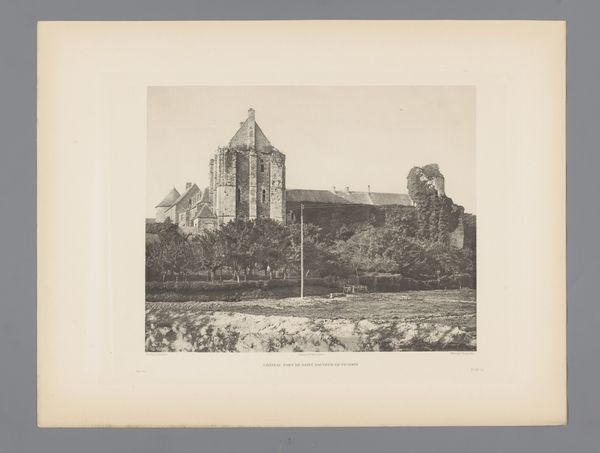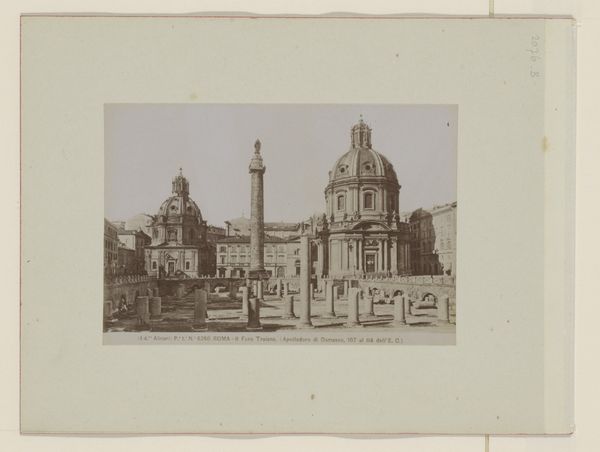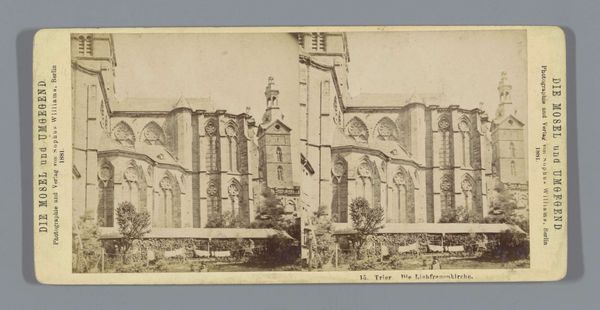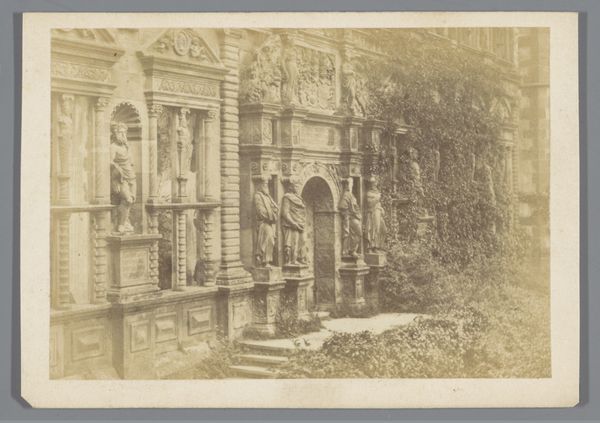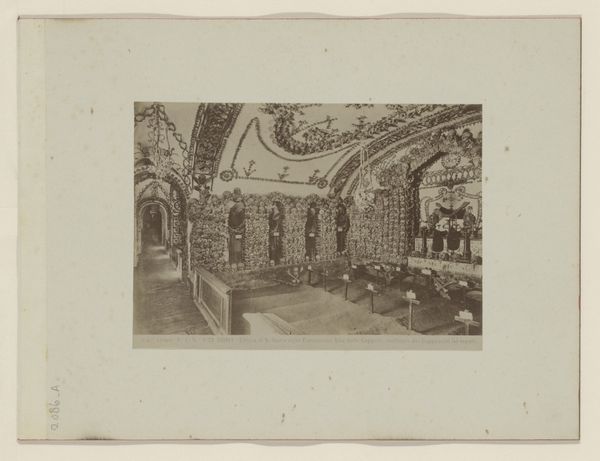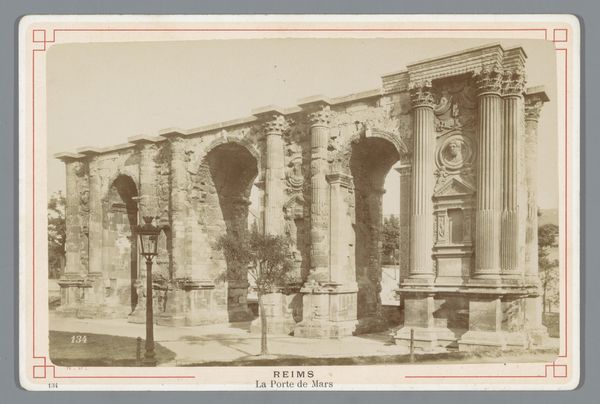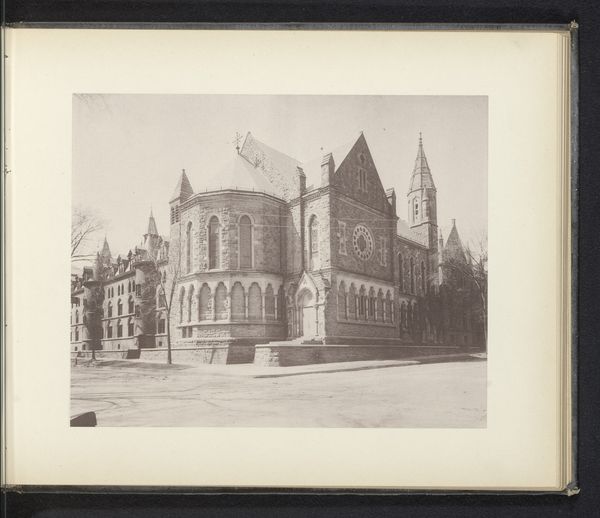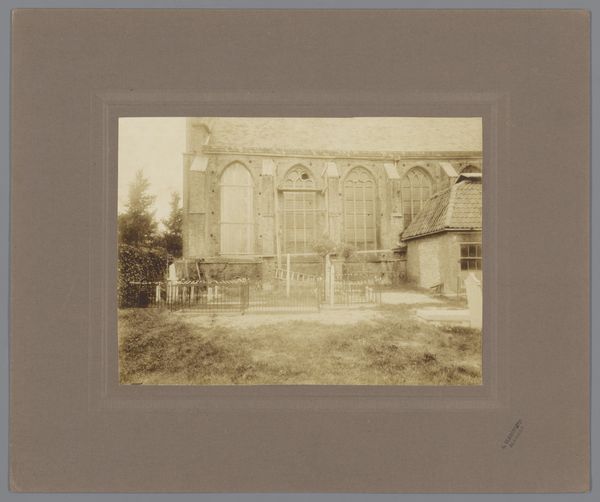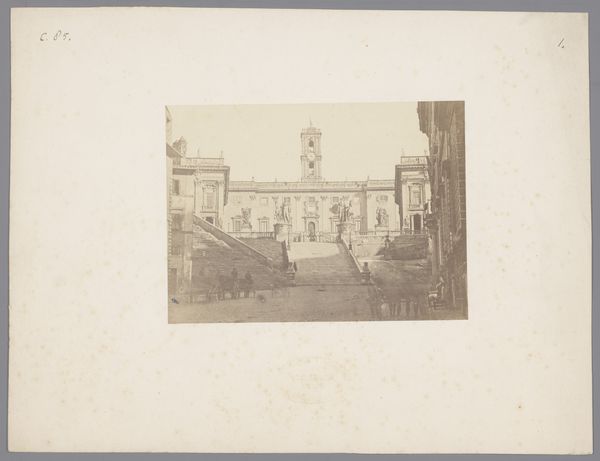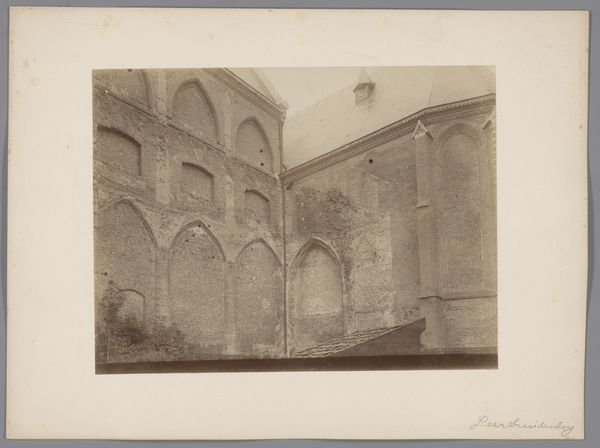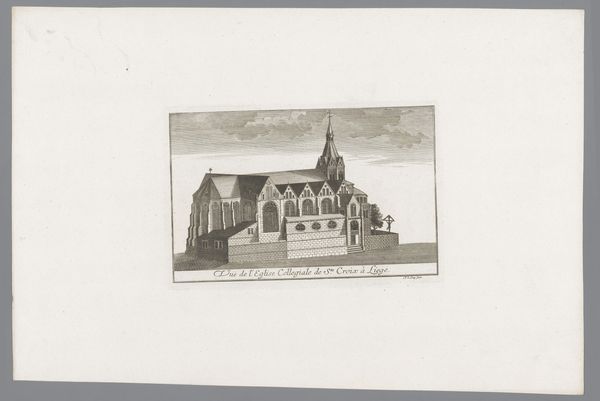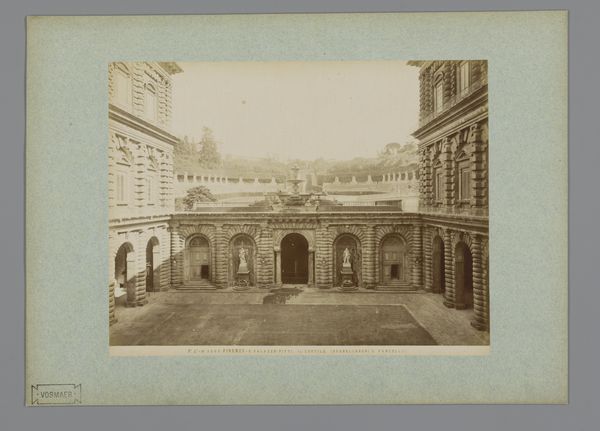
Fotoreproductie van een prent van de Notre Dame du Port in Clermont-Ferrand, Frankrijk 1870 - 1885
0:00
0:00
print, photography, albumen-print, architecture
# print
#
landscape
#
photography
#
romanesque
#
cityscape
#
albumen-print
#
architecture
Dimensions: height 63 mm, width 105 mm
Copyright: Rijks Museum: Open Domain
Curator: What a beautifully aged photograph. Jean Baptiste Berubet captured this albumen print of the Notre Dame du Port in Clermont-Ferrand, France, sometime between 1870 and 1885. Editor: It’s melancholic, somehow. That sepia tone and the delicate details evoke a powerful sense of history, and something lost. I’m drawn to the weight of those stone arches and the way light fades in the distance. Curator: The weight is palpable, isn’t it? Romanesque architecture always brings with it such associations, with echoes of pilgrimages and sacred space. Churches are also powerful symbols for local identity, cultural cohesion and the persistence of collective belief over generations. This building looks reassuring and immutable. Editor: What intrigues me is thinking about Berubet’s process. What type of equipment did he use? An albumen print like this involves coating paper with egg white and silver nitrate, making it sensitive to light. A fairly laborious method when you think of mass producing images. How many hands would have touched this photograph, from its conception to distribution? Curator: That’s a compelling perspective, bringing into focus not just the subject of the image but the tangible processes behind its creation and circulation. We’re holding something precious here; an early iteration of sharing photographic imagery widely. But what’s being shared carries weight in symbolic meaning – ideas of sacred buildings and Romanesque styles evoking certain places and times. Editor: It highlights a tension – this merging of mechanical reproduction with high architectural style. Early photography democratized access to these monumental landmarks. It was no longer limited to the wealthy taking grand tours, as photographs like this meant buildings like the Notre Dame du Port became available to the masses in image form. Curator: Exactly. By examining these convergences we understand both the symbolic function of imagery and its value within popular culture and artistic conventions. Even in its reduced photographic scale, it still represents solidity, continuity, and a spiritual ideal made material. Editor: It makes me consider the consumption of these images: perhaps placed in a family album, given as gifts, passed among friends. Photographs had multiple lives outside of simply being "art." Curator: Yes, absolutely. This photo is less an art object in the traditional sense, and more of an artifact embedded within complex historical contexts. Thank you for pulling it away from the purely aesthetic. Editor: And thank you for the historical symbolism that is present!
Comments
No comments
Be the first to comment and join the conversation on the ultimate creative platform.
